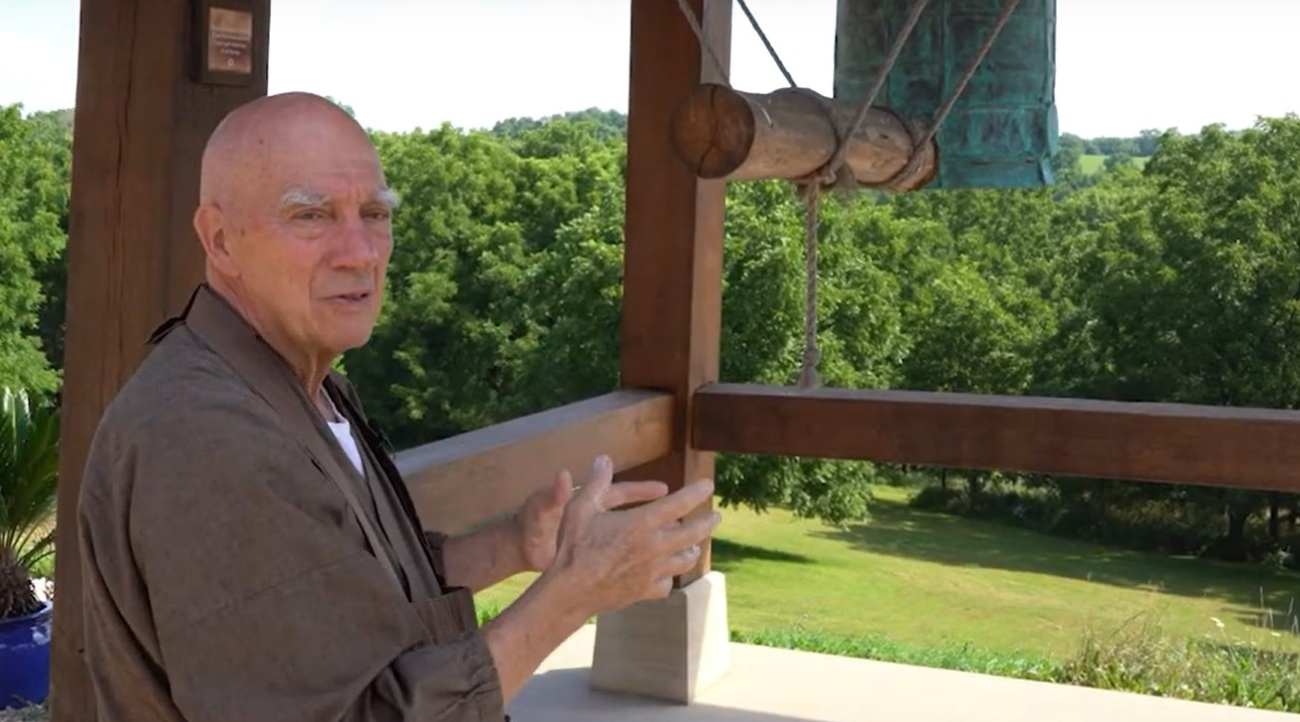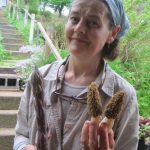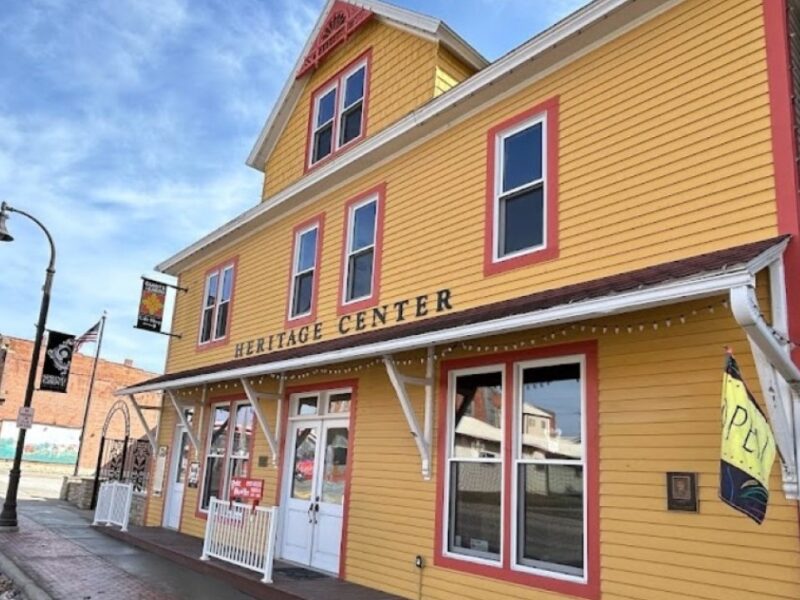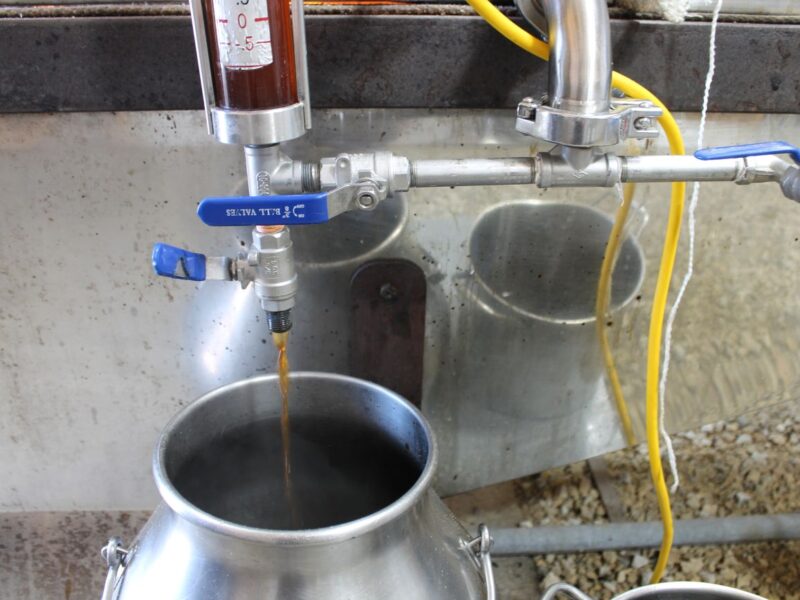Founding teacher and abbot Rev. Shoken Winecoff explains the significance of the bell at Ryumonji, a Soto Zen Buddhist temple located in the rolling hills just across the Minnesota-Iowa border southeast of Spring Grove (Houston County). (Photo courtesy of the Ryumonji Center)
Essay: A Story Of Balance—A Zen Buddhist Retreat In The Heart Of The Midwest
ALLAMAKEE COUNTY, IOWA — With half a billion followers, Buddhist practitioners abound in Asia. But we Midwesterners needn’t look far to learn a great deal more. Since 2000, our own Driftless region has provided a bucolic setting for a node of Buddhist teaching and practice.
The Ryumonji Zen Monastery and retreat center in rural Dorchester, IA, was the vision of a man who calls himself Shoken Winecoff. “Shoken” is defined as a meeting with a Zen master. Both the terminology, and ritual involved in Zen practice, feel complicated to the uninitiated. But Shoken Winecoff, a man now in his eighties, welcomes visitors to this place with the calm, simplicity and ease that one might expect of a master teacher.

Forty acres of a former farmstead were transformed into the Ryumonji traditional training monastery and meditation center. (Photo courtesy of the Ryumonji Center)
A group of about twenty, all of us from Western traditions of religious practice or non-practice, visited the monastery on a recent, very hot June morning. We arrived to see Shoken speaking with the fellow cutting the grass that morning. He’s a very hands-on individual, clearly involved with every aspect of life at the monastery.
Nestled In Harmony With Nature
Ushered inside to quickly close the outside doors and preserve air conditioning, our first obligation was to remove shoes in the entry provided for this need. We later learned the building is entirely self-sustaining in summer. Geothermal and solar provide energy and climate control. Winter demands some supplemental energy from the regional electric grid, but Shoken is always working to make the place function more efficiently.
The hillside complex of three connected buildings is sited below the hill’s crest and looks out to a wooded valley. The central worship hall is flanked by two wings and connected by covered halls.
The layout is that of a shallow U-shape, incorporating the everyday needs of housing inhabitants with sacred spaces for worship and instruction. Natural materials, hand-crafted and highly prescribed traditional design is well-married with the practical needs of a climate-controlled structure able to stand up to Upper Midwest weather.
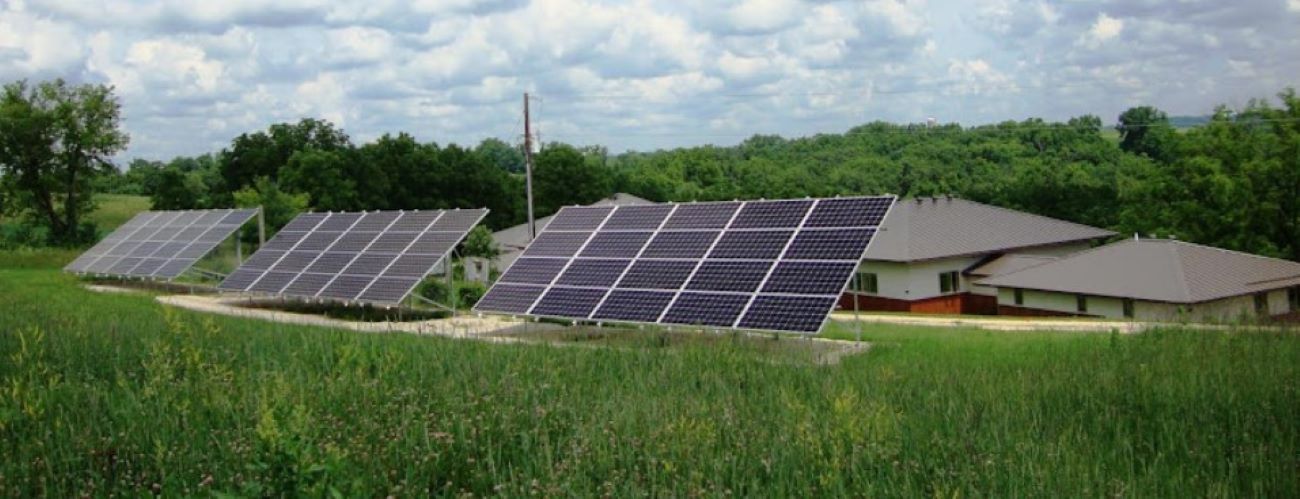
Ryumonji’s facilities are designed for energy efficiency keeping its guests comfortable in all seasons. (Photo courtesy of the Ryumonji Center)
The entry, courtyard-side of the buildings, appears intentionally symmetrical, balanced, rustic yet formal. This court includes an entrance gate structure and another which shelters a beautiful cast bronze bell.
On leaving the compound, Shoken instructed us in pulling back a rope attached to a horizontal swinging log; the log needs to forcefully strike the outside of the bell and then be pulled up short before it strikes the bell again. The sonority of this bell, about two feet tall, and 18” diameter is profound. It resounds across the valley. And Shoken is proud of having had a hand in forming the model for the casting and having it made in Minnesota.
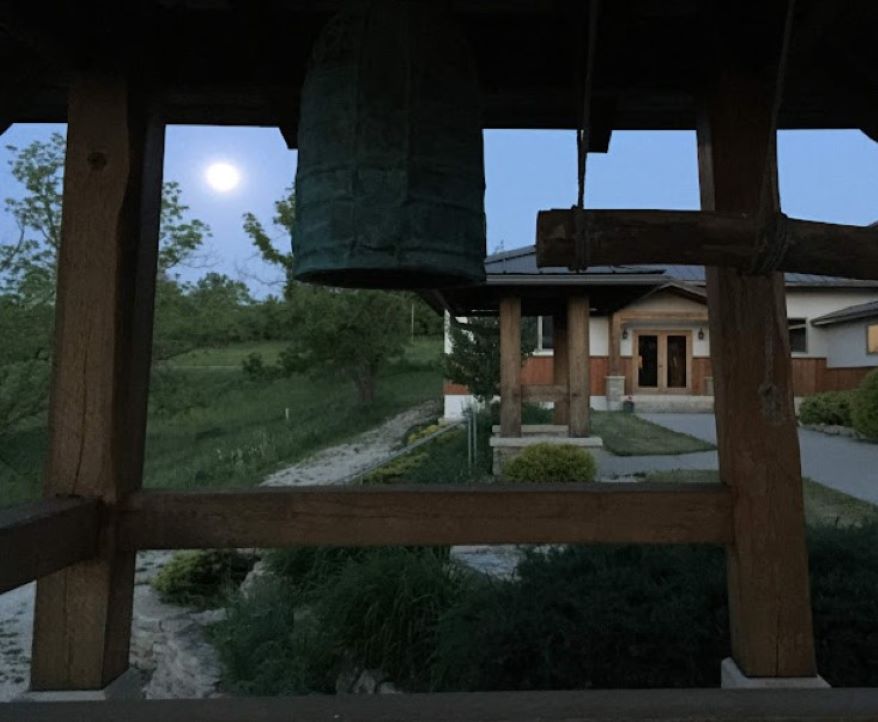
The Bell Tower – Shoro — is a traditional structure of the Zen Monastery; the sound of the bell echoes throughout the valley and calls people to service. (Photo courtesy of the Ryumonji Center)
The bell looks a bit more the part than the simple steel version they used for a while. But as with everything, Shoken’s vision and reality have a way of merging with time, patience, fundraising and partnerships with so many craftspeople, neighbors, students and patrons.
As we toured, Shoken peppered our discussion about life, work and the monastery itself with many anecdotes. Though a person who spends a good deal of time in silent meditation, a focus of Zen practice, he’s truly talkative and always kind.
“Wisdom with compassion” was a tenet he mentioned several times. And his own search to become this, to literally “get his life together” when as a young man in the 1960’s it was anything but, is the short version of why he arrived at living a life as a Buddhist monk.
Gentle Teacher, Ancient Practice
To help our understanding of Zen practice, Shoken invited us to join him in a short meditation. Instruction, through classes of varying lengths and also some public meditation sessions, are part of the mission of this place.
In a meditation hall with knee-high benches, we were invited to enter the space and take a seat. Every step of this process did include an instruction, even including which foot and at what side one crosses the threshold. But despite the minutiae around the rite, Shoken never made it feel onerous, or as if we might offend with a “misstep”.
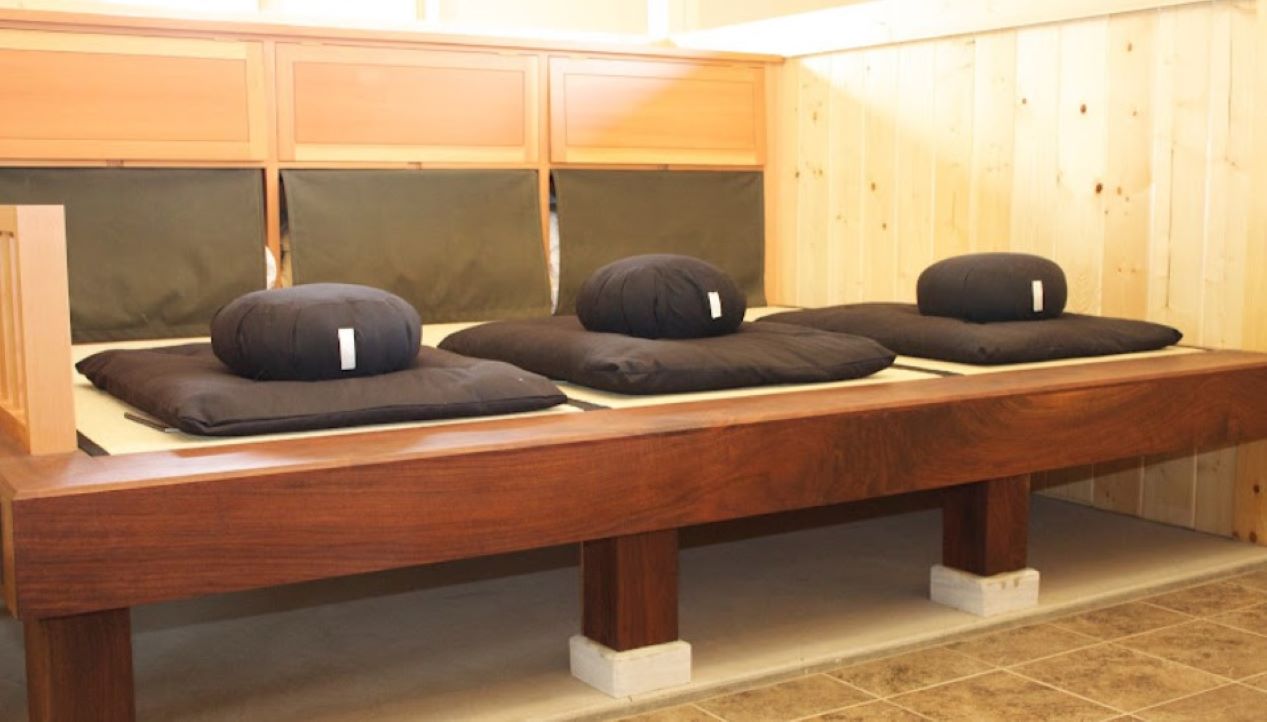
The Sodo, or Monks’ Hall, features raised mats and seating for ‘zazen’ meditation practiced by residential guests and the general public. The Sodo is built to ancient traditional standards seen throughoout India, China and Japan. (Photo courtesy of the Ryumonji Center)
Having taken our places and learned of the attitude of one’s posture, eye gaze, hand and head positioning, Shoken sounded a bell three times to commence the meditation. Just then I heard what sounded like a bird striking a window behind me. I couldn’t help but think, “Darn, was that karma?”
But the instruction of the meditation is to not think. And we were reassured in advance by the master of this challenge: that once you “think” you’ve got it, well, that’s when “it” has gone. And with that, we sat.
At the sound of a single bell, Shoken ended the meditation. We were invited to stretch a bit. We left the space, not changed so much as just a bit more calm, knowledgeable, present in the moment.
In the peaceful environs of this place, a litany of connection comes through. The teaching, the design, the rituals, the principles have all moved through time and space, person to person, teacher to students, dating all the way to the inception of these ways by the Buddha some 1500 years ago on the Indian subcontinent.
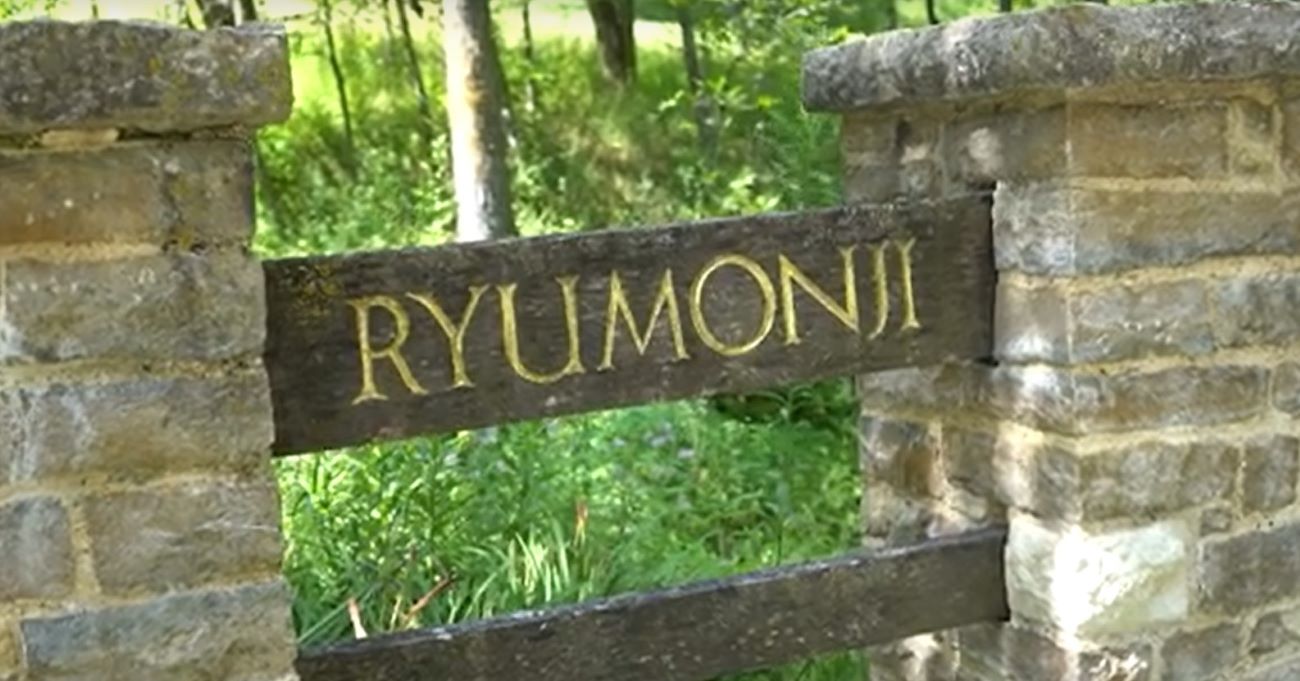
The name “Ryu-mon-ji” is composed of three Japanese characters meaning “Dragon Gate Temple,” an ancient name that comes from a Chinese legend in which the “waves of everyday life are the dragon gate (and) how we pass through these waves is our human challenge.” (Photo courtesy of the Ryumonji Center)
And so it is, this contemporary tribute, a dream, an endeavor, an installation which brings old and new so easily together, quietly in our midst.
With thanks to all the souls who make improbable things happen in our Driftless region, ways of being and the connection that brings us together. We know this, so it is.
…………………
In addition to its special events, the Ryumonji Zen Monastery offers public meditation sittings Thursdays at 7:30 p.m. and Sundays at 9 a.m. To learn more about the center, its retreats and ongoing programs, visit the Ryumonji Zen Monastery home page or call 563-546-1309. Click Here for a map.
…………………
Contributor
Happily “Driftless”, Anna Loney and family reside in Lanesboro, MN, and can often be found hammering, soldering, forging and forming her world into objects of art or intrigue.


